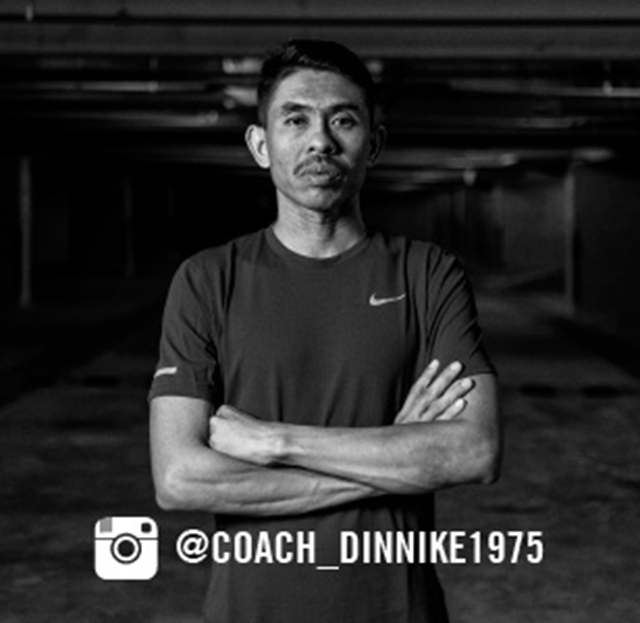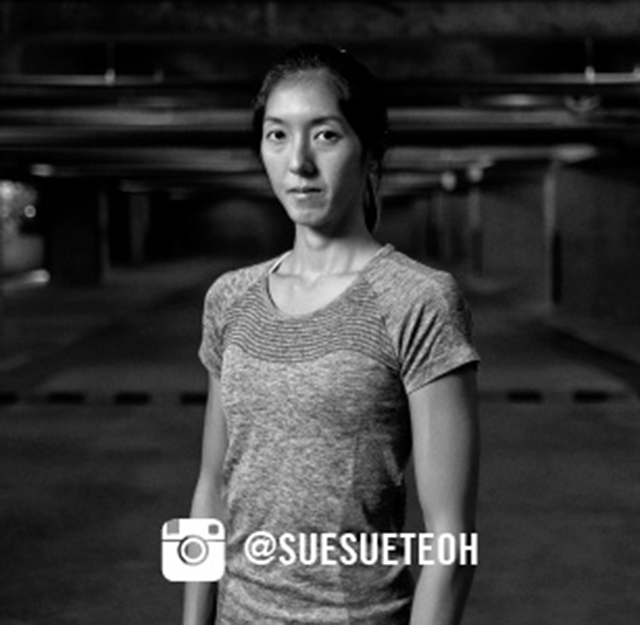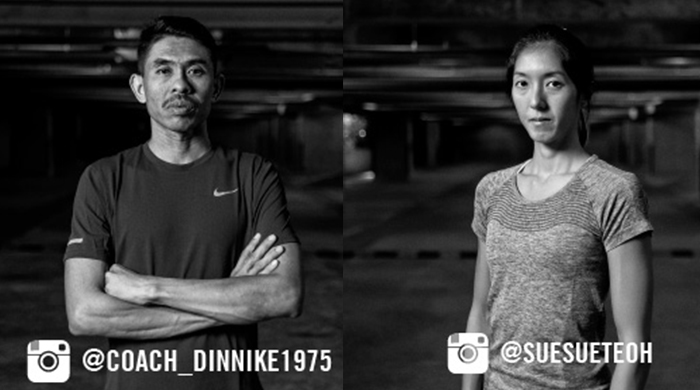Taking place on 10 April 2016, if you were lucky enough to nab a spot in Nike’s annual We Run KL 2016 race, you have just 5 weeks left to train up for it. Whether it’s your first or your tenth half marathon, here’s advice from two veteran runners to help you finish the race in your best time yet. Stopwatches at the ready…
How long have you been running?
Coach Din (D): 14 years.
Coach Sue (S): I’ve been running since 2007, so almost 9 years now.

How did you get into it?
D: I have been running long distance since I was in school, with the motivation from my mother’s passing. I started off by participating in 1,500m, 5,000m, and 10,000m runs, then eventually joining half and full marathons.
S: I started running as I wanted to get into triathlons.
Your proudest achievement so far?
D: Representing Malaysia in the 2007 SEA Games in Korat, Thailand. I’m also the only Malaysian to have represented our country in the Marathon in Nairobi, Kenya back in 2004. Another achievement that I’m proud of would be hitting my personal best time (2 hours 33 minutes) at a marathon in Pyongyang, North Korea.
S: As an athlete, representing Malaysia in Triathlon at the 28th SEA Games in Singapore last year. As a coach, being Nike’s official running coach!
What do you enjoy the most about running?
D: Running combines stamina, strength and cardio exercises. Every race brings forth a new challenge. My idols in running are Steve Prefontaine and Haile Gebrselassie, and a big dream of mine is to one day go to Oregon, which is where Prefontaine is from.
S: The challenge of getting faster at my chosen distance.

We’re 5 weeks away from We Run KL 2016. Please share some tips for runners preparing for the race?
D: Look at building on endurance, speed and power. For endurance, runners have to train themselves to run longer distances from 10km and above. For this, runners should run 6 days a week. For speed, runners have to do certain trainings that help with this such as interval running, fartlek, and tempo run. For power, runners have to do weigh training at the gym as well as hill runs to build more strength to run. The hill training runs should only be done once a week.
S: Get onto a training plan – with a plan you’ll be more likely to achieve your goals. Plus you can log how much training you have done and will see if you are on track. Nike+ app has a coach function that helps with this! Ensure you recover well – as mileage increases, your body needs to adapt to this increased demand so make sure you have enough sleep and rest days for recovery. It’s also a good thing to go for regular sports massages to help with any muscle soreness and speeding up recovery. Find the right gears for your running – Find the right pair of shoes and running apparel that fits your body and type of running. You will be using these gears for a long race so make sure you are comfortable in it and it doesn’t hurt you. Try to aim for at least 35-40km per week. You can spread the total run mileage out into 4 or 5 runs a week. Many inexperienced runners don’t get in enough base mileage and that’s where they will get into trouble on race day.
What can runners do to avoid injury?
D: One of the main things runners should do is stretch. Always stretch before and after a run for about 5-10 minutes, which helps in avoiding injuries.
S: Increase weekly running volume slowly and try to spread it out over the whole week. Increasing volume too quickly can lead to injury. Ensure you give your legs some easy or rest days between hard running sessions. For every hard day of running, follow it with at least one day of easy running. Include strengthening exercises into your training program to help with muscle imbalances and thus protect tendons and joints from injury. Reduce any over-pronation of the feet by wearing the correct type of shoes for your feet and running mechanics.
Your must-haves for a half marathon?
D: A pair of good running shoes for long distance, socks that aren’t too thick and a running vest that doesn’t stick to your body when you run.
S: Nike Zoom Elite 8 shoes, and my sunglasses!
What other exercises should runners do to make sure they’re in their best possible form for We Run KL?
D: Runners can do weight training to gain more energy and hill training runs to improve on the strength of their legs which would help in your overall form for We Run KL.
S: Runners should practise running form drills and strengthening exercises, especially for the core muscles, to help improve running mechanics. Run drills are like the A-skips, B-skips and Butt kicks. Examples of strengthening exercises would be basic planks, side planks, bird-dog, back extensions and hip extensions.
Do you recommend using a foam roller?
D: In my opinion and experience, it is not necessary. Simple exercises like a short jog and stretching after training are important basic practices that runners should always do to warm-up and cool down. Foam rollers are an alternative for athletes who aren’t capable of stretching to warm up and cool down their bodies, so it would really depend on the individual and what is best for you.
S: Yes, I would recommend foam rolling for both warm up and cool downs. Find a foam roller that is not too dense as this can hurt your muscles more than it should. Roll each muscle in short back and forth movements. If you find a knot in your muscle, you can just apply pressure at that point for about 30 seconds and release. Foam rolling should not be too painful, the goal is to restore healthy muscles not a pain tolerance test! Do not roll a joint or bone. Avoid rolling your lower back or neck areas as these areas are more sensitive and require more professional attention.
| SHARE THE STORY | |
| Explore More |




